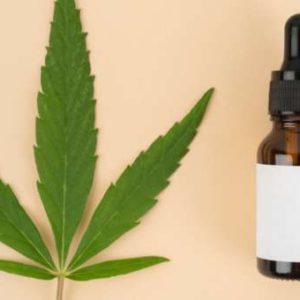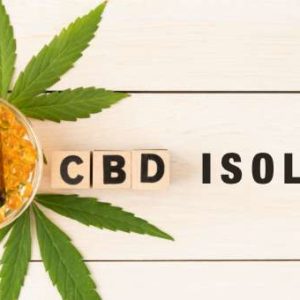Difference Between Cannabinoids and Terpenes
- admin
- General

Many people new and seasoned in the Hemp industry ask, “what is the difference between terpenes and cannabinoids?” Hemp and CBD products like CBD oil and hemp topical skincare solutions are becoming increasingly popular around the world, but there are still many people out there who aren’t sure on the specifics of what goes into CBD oil and how the various compounds and molecules contrast and compare or the difference between Terpenes vs Cannabinoids.
- Guide to Cannabinoids vs Terpenes
- What is the Difference Between Cannabinoids and Terpenes?
- Benefits of Understanding Terpenes vs Cannabinoids
- FAQs About Terpenes and Cannabinoids
Guide to Cannabinoids and Terpenes
When shopping for hemp and CBD products, you may see terms like ‘terpenes’ and ‘cannabinoids’ being mentioned, again and again, both by sellers of CBD oils like Hemp Therapies and CBD enthusiasts in your own social circle.
What exactly are terpenes CBD and what are the different types of cannabinoids you should be aware of? What is the difference between terpenes and cannabinoids? What effects do they have on the human body? Is one better than the other? Are there any risks associated with them?
Many people find themselves asking these common questions about terpenes cannabinoids, but this guide will answer them all, giving you the full lowdown on what terpenes are, what cannabinoids are, how they differ, and what they do.
What Are Terpenes?
Terpenes are something you’re already very familiar with, even if you don’t quite know the scientific definition or chemical structure of them. One of the biggest ways to understand the difference between cannabinoids and terpenes is by explaining what they do. They’re chemicals that influence how things smell.
These chemical compounds are responsible for many of the smells we love the most, like citrus fruits, relaxing plant aromas, and so on. They’re also known as terpenoids, and they’re produced in both the flowers and leaves of the cannabis plant, helping to give it its distinctive flavor and odor.
Terpenes CBD plays a massive part in aromatherapy and can influence us throughout our lives, helping us relax when we smell something we like and allowing us to identify and detect different plants based on their odors.
The terpenes in CBD oil help to influence the way it smells and tastes, but scientific research has determined that these little molecules can do much more than that. Terpenes are believed to work together with cannabinoids to create something called the ‘entourage effect’.
This is another term you’ll often hear a lot in CBD Oil enthusiast circles, and it’s especially relevant when talking about full spectrum CBD oil, which can be ordered direct from Hemp Therapies.
The entourage effect is when terpenes and cannabinoids combine their efforts to produce faster, stronger effects on the human body, so terpenes have a big part to play in the overall effectiveness and quality of any CBD oil solution. In short, terpenes should not be ignored.
What Are Cannabinoids?
As well as understanding terpenes CBD, it’s important to define hemp cannabinoids too and understand exactly what they are and what they do.
Put simply, cannabinoids are naturally occurring chemical compounds found in cannabis sativa plants. They can be extracted from both marijuana and hemp plants and there have been over one hundred cannabinoids discovered by scientists so far.
Research is ongoing into the effects of these cannabinoids and what kinds of benefits they can bring to the human body.
They can work by interacting with the endocannabinoid system (ECS). This is a cell-signaling system found in the human body and bodies of other animals, linked with a range of processes, feelings, and sensations, including pain, tiredness, stress, and appetite.
The human body produces its own endocannabinoids, which are quite similar in chemical structure to cannabinoids and are able to bind to special receptors throughout the ECS in order to trigger certain effects.
When we use CBD oil or other legal cannabinoids products, the cannabinoids are also able to interact with our ECS and cause certain things to happen, like pain relief, lower stress levels, reduced inflammation, and so on.
Types of Cannabinoids
Understanding the definitions and functions of cannabinoids vs terpenes can help you identify their differences. The following is a brief list of cannabinoids we are currently aware of, focusing on some of the most important ones:
- THC – THC is one of the most talked-about cannabinoids. It’s the main cannabinoid responsible for producing the ‘high’ sensation associated with recreational cannabis use and is quite strictly controlled around the world because of this. However, THC can also have plenty of benefits in small doses. It can help with pain relief and is actually one of the most potent cannabinoids when it comes to soothing pain.
- CBD – CBD is another of the most famous cannabinoids and also the most beneficial, which is why CBD oil is so popular and so commonly recommended by doctors, despite the fact that it’s not on the list of FDA approved cannabinoids. CBD, also known as cannabidiol, does not produce any kind of high but can help with pain relief, stress relief, and treating all kinds of diseases and conditions such as epilepsy, cancer, Parkinson’s, and Alzheimer’s.
- THCV – THCV is quite similar to THC, but with a slightly different chemical structure, leading to different effects. It also produces a high but is said to be softer and more relaxing than regular THC, so can therefore be recommended to people suffering from anxiety and severe stress. It can also assist with bone strength and repair.
- CBDV – Another of the hemp cannabinoids is CBDV. It’s quite similar to CBD in many ways in that it doesn’t cause any kind of high but can offer a lot of benefits. Some studies have suggested that it can help to reduce the frequency and severity of epileptic seizures, as well as aiding with feelings of nausea too.
- CBG – CBG is another of the global cannabinoids found in both cannabis and hemp plants. It’s not psychoactive but it’s still very powerful, helping to relieve pain and soothe inflammation. It also has neuroprotective properties so can help with brain health.
What is the Difference Between Cannabinoids and Terpenes?

As previously mentioned, you can see that cannabinoids vs terpenes are different in many distinctive ways. They have very different chemical structures and different effects. Terpenes are responsible for aromas and tastes, while cannabinoids interact directly with the ECS to produce different effects.
Even though these two ingredients are very different, they can work very well together, which is why so many experts recommend full spectrum CBD oils, like those provided by Hemp Therapies, for people who want the best effects.
Benefits of Understanding Terpenes vs Cannabinoids
CBD oil has a lot to offer and there are many misconceptions about CBD oil. By understanding more about how it works and what ingredients it contains, we can make smarter decisions regarding our own health and wellness. Both terpenes and cannabinoids play a key part in helping this product offer such a broad range of benefits.
FAQs About Terpenes and Cannabinoids
What are terpenes in CBD?
Terpenes are molecules that help to give plants their smell and taste. They can also work with cannabinoids to produce more potent effects.
How to use terpenes?
You can find terpenes for sale from a trusted provider and then add them to diffusers as a form of aromatherapy. They can be used for vaping to.
How do terpenes work?
Terpenes have natural chemical qualities that allow them to give off distinctive aromas and tastes. They help us differentiate between different plants based on smell.
What are cannabinoids?
Cannabinoids are naturally occurring chemical compounds found in cannabis sativa plants. Examples include THC, CBD, and THCV.
How do cannabinoids work?
Cannabinoids work by interacting with the endocannabinoid system. They can produce a range of effects in humans such as pain relief or lowered stress levels.
How many cannabinoids in cannabis?
Scientists have so far estimated over 100 different cannabinoids in the cannabis sativa plant. Studies are ongoing to learn more about each one.












